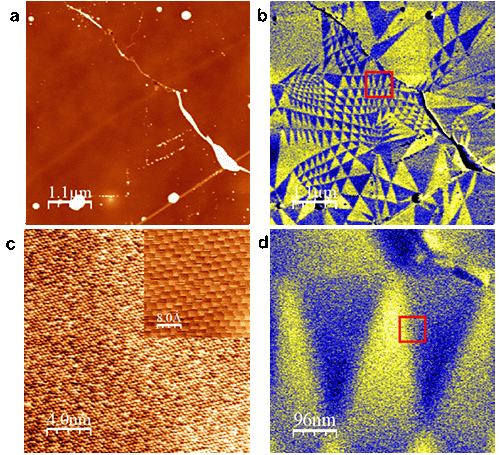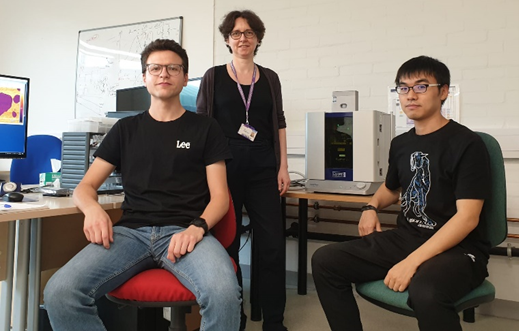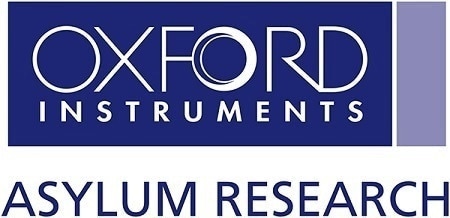Nanomaterials such as two-dimensional crystals and biomolecules share atomic-scale electric polarization properties capable of producing significant macroscopic effects. These effects impact a range of applications, from molecular biology and neuroscience to advanced photonic and energy storage devices.
Dr. Laura Fumagalli of the Condensed Matter Physics Group, University of Manchester, is recognized for developing Scanning Dielectric Microscopy. This technique is used to probe the dielectric properties of materials at the nanoscale based on atomic force microscopy (AFM) measurements of electrostatic force and current.
In 2021, Dr. Fumagalli necessitated a state-of-the-art AFM to increase her group’s measurement capabilities. Her primary requirements were achieving atomic resolution in all three dimensions, mode flexibility, and sample environmental control, including the ability to operate seamlessly in liquid.
Image Credit: Asylum Research – An Oxford Instruments Company
Research Methods
Dr. Fumagalli has used electrostatic force microscopy (EFM) extensively in her research to probe the dielectric properties of diverse materials under the influence of a voltage bias. For instance, she utilized EFM to investigate interfacial and confined water.1 Through this research, Dr. Fumagalli and her colleagues conclusively demonstrated that, for the first time, water next to a surface is considerably less polarizable than in bulk water.
This discovery has important implications in several fields, including biology and energy storage technology. Low-noise electronics in the AFM were paramount for maximizing the signal-to-noise in the data. Dr. Fumagalli has also utilized EFM to investigate the dielectric properties of biological molecules, including protein complexes and DNA.2
Given her affiliation with the Graphene group and the National Graphene Institute in Manchester, Dr. Fumagalli is notably active in the field of 2D nanomaterials. She recently studied 2D heterostructures, including 2D twisted layers, which have new electro-optical properties and potential for use in the development of next-generation devices.3,4
Throughout this research, she and her team utilized both EFM and kelvin force probe microscopy (KPFM) to visualize piezoelectric and ferroelectric properties, specifically ferroelectric triangular domains in 2D twisted crystals as illustrated below.

Examples of images taken with the Cypher ES on twisted bilayer of MoS2 by Laura and her group. Using electrostatic force microscopy (EFM), they observed ferroelectric triangular domains (b,d), not visible in the topography image (a). Lateral force AFM images in (c) enables visualization of the atomic structure of the layers—zoom in the squared region indicated in (d). Image Credit: Asylum Research – An Oxford Instruments Company
User Impressions
For Dr. Fumagalli, the Cypher ES Environmental AFM proved to be an exemplary option in her laboratory. “First off, it definitely brings the high resolution we need in our work. And just as important, it’s reasonably easy to get this resolution on a regular basis with no special skills or touch required—even our less experienced students can take publication-quality data without much training,” says Laura.
“Plus, Cypher supports all the different modes we want, from simple morphology under air to the more challenging nanoelectrical measurements in different ambient conditions—like water-immersed samples. And we really value that the operating software is open-source. I’m always looking to optimize and extend AFM modes to interrogate samples in greater detail, so being able to use customized code is invaluable there.”
References and Further Reading
- L. Fumagalli et al. (2018) Anomalously low dielectric constant of confined water, Science 360, 1339–1342. https://www.science.org/doi/10.1126/science.aat4191
- A. Cuervo et al. (2014). Direct measurement of the dielectric polarization properties of DNA, PNAS, E3624–E3630. https://doi.org/10.1073/pnas.1405702111
- P Ares et al. Piezoelectricity in monolayer hexagonal boron nitride Adv. Mater. 32 (1), 1905504. https://onlinelibrary.wiley.com/doi/full/10.1002/adma.201905504
- C.R. Woods et al. (2021). Charge-polarized interfacial superlattices in marginally twisted hexagonal boron nitride, Nature Comm., 12, 347. https://doi.org/10.1038/s41467-020-20667-2
This information has been sourced, reviewed, and adapted from materials provided by Asylum Research – An Oxford Instruments Company.
For more information on this source, please visit Asylum Research – An Oxford Instruments Company.



